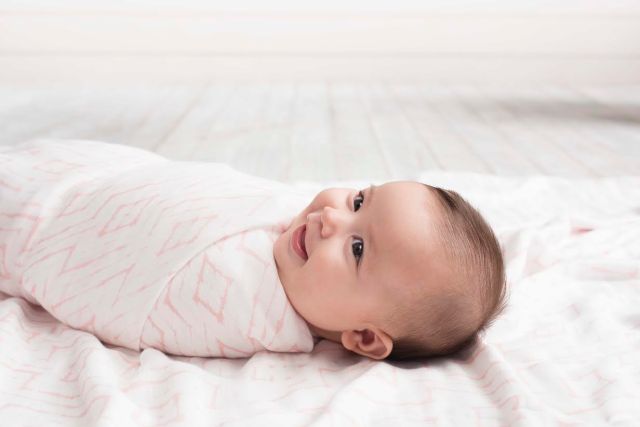Wrapping up your newborn like a burrito looks adorable and can soothe babies and help them sleep, but getting the hang of swaddling takes a little practice. Read on to find out the tricks to keeping your little Houdinis from breaking free of the blanket while giving them a safe and cozy spot to snooze.
photo: Antonia Rusev via Pixabay
Why should I swaddle my baby?
The swaddle mimics the womb environment, which keeps baby warm and feeling secure and may even help with colic, according to the Mayo Clinic. Young babies also experience the moro reflex, or startle reflex, which can wake them up, and the swaddle can soothe baby and lessen the intensity of the reflex. That said, talk to your health care provider about whether swaddling is right for your baby.
How do I safely swaddle my baby?
Take a prenatal class in swaddling or watch the numerous YouTube videos on the subject and you’ll find two main swaddling styles. Both follow a similar format, in which babies’ arms are tucked at their side or on their chest and then a thin blanket is wrapped around their bodies, tight around the chest but loose enough around the hips and legs for baby to move their legs freely. Leg movement is important, as you’ll learn about in the following videos.
Shriners Hospitals for Children Offers Advice on Swaddling Infants Safely
In this video, a pediatric orthopedic surgeon at the Shriners Hospital for Children demonstrates a popular swaddling technique and answers related questions about hip and leg movement and the importance of swaddling correctly.
How to Swaddle a Baby
In this video, UC San Diego Health shows a similar technique, which involves laying the blanket in a square shape, instead of a diamond with the top point folded down. The bottom of the swaddle is folded up like a blanket and then tucked into a side fold so it doesn’t unravel.
Are there risks to swaddling?
As you saw in the videos, there are risks. Babies should only be swaddled when they lay on their backs, and their legs must be free to move. Swaddles can also contribute to overheating or, if not wrapped securely, can cover your child’s face. Here are recommendations from the American Academy of Pediatrics (AAP) on safe sleep for babies, which you can also find on the AAP website:
AAP Safe Sleep Recommendations
The AAP recommends parents follow the safe sleep recommendations every time they place their baby to sleep for naps or at nighttime:
• Place your baby on her back to sleep, and monitor her to be sure she doesn’t roll over while swaddled.
• Do not have any loose blankets in your baby’s crib. A loose blanket, including a swaddling blanket that comes unwrapped, could cover your baby’s face and increase the risk of suffocation.
• Use caution when buying products that claim to reduce the risk of SIDS. Wedges, positioners, special mattresses and specialized sleep surfaces have not been shown to reduce the risk of SIDS, according to the AAP.
• Your baby is safest in her own crib or bassinet, not in your bed.
• Swaddling can increase the chance your baby will overheat, so avoid letting your baby get too hot. The baby could be too hot if you notice sweating, damp hair, flushed cheeks, heat rash, and rapid breathing.
• Consider using a pacifier for naps and bedtime.
• Place the crib in an area that is always smoke-free.
Learn more on the AAP website.
When should you stop swaddling?
Talk to your health care provider for advice. The main sign to look for is that your baby is trying to roll over onto their belly, as swaddles are only safe when a baby is laying on their back. This could occur as early as two months after birth.
Struggling with the swaddle blanket?
If the traditional swaddle blanket isn’t working for you or your baby, check out our guide to swaddles and sleep sacks. No wrapping required; zippers and other enclosures keep your baby all bundled up.
—Eva Ingvarson Cerise
featured photo: aden & anais
RELATED STORIES:
Soothing Sleep Aids for Babies and Toddlers
17 Newborn Must-Haves You’ll Really Use in the First Weeks
Sweet Dreams: 15 Swaddles & Sleep Sacks for Baby’s Best Sleep











